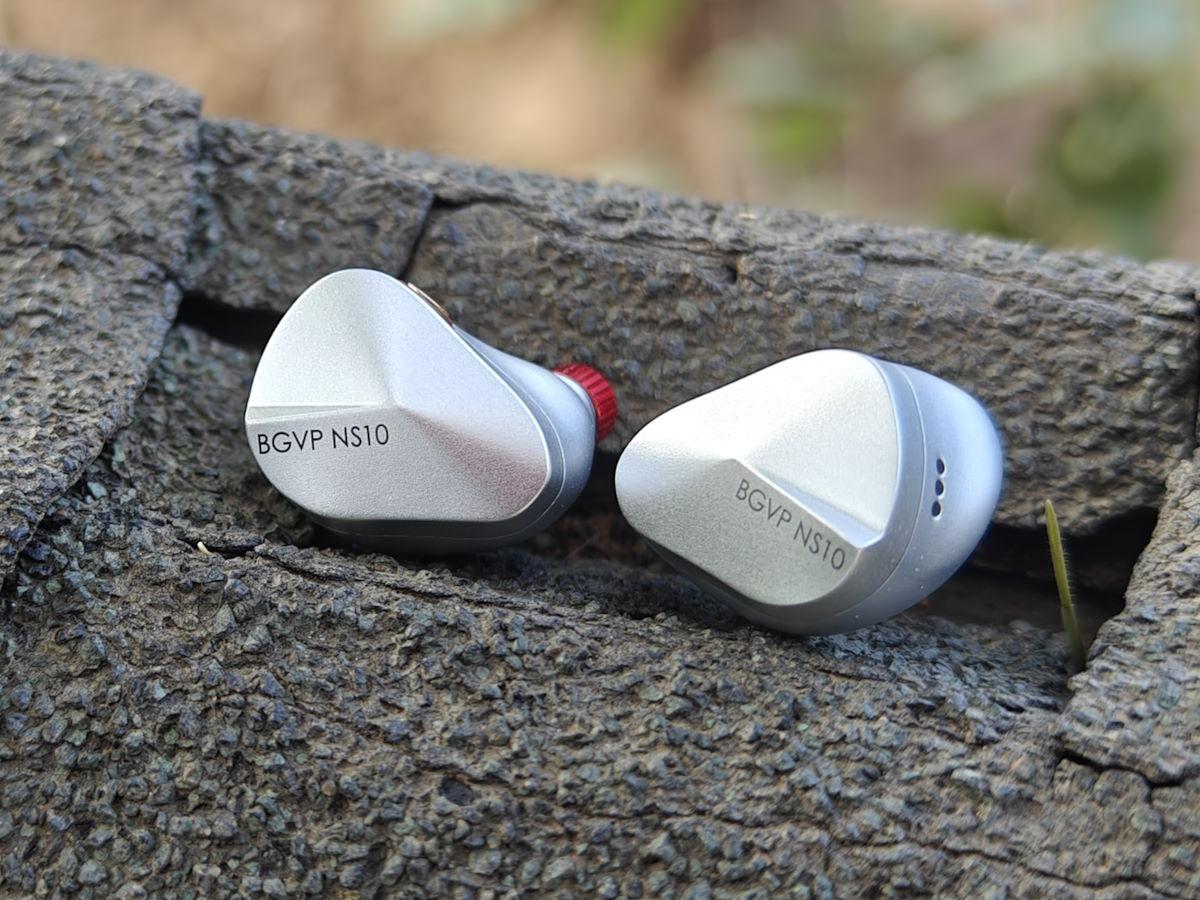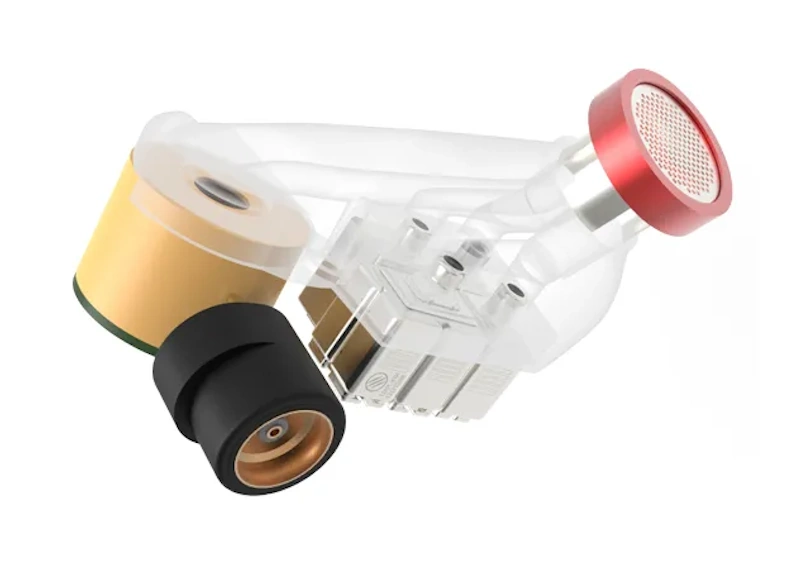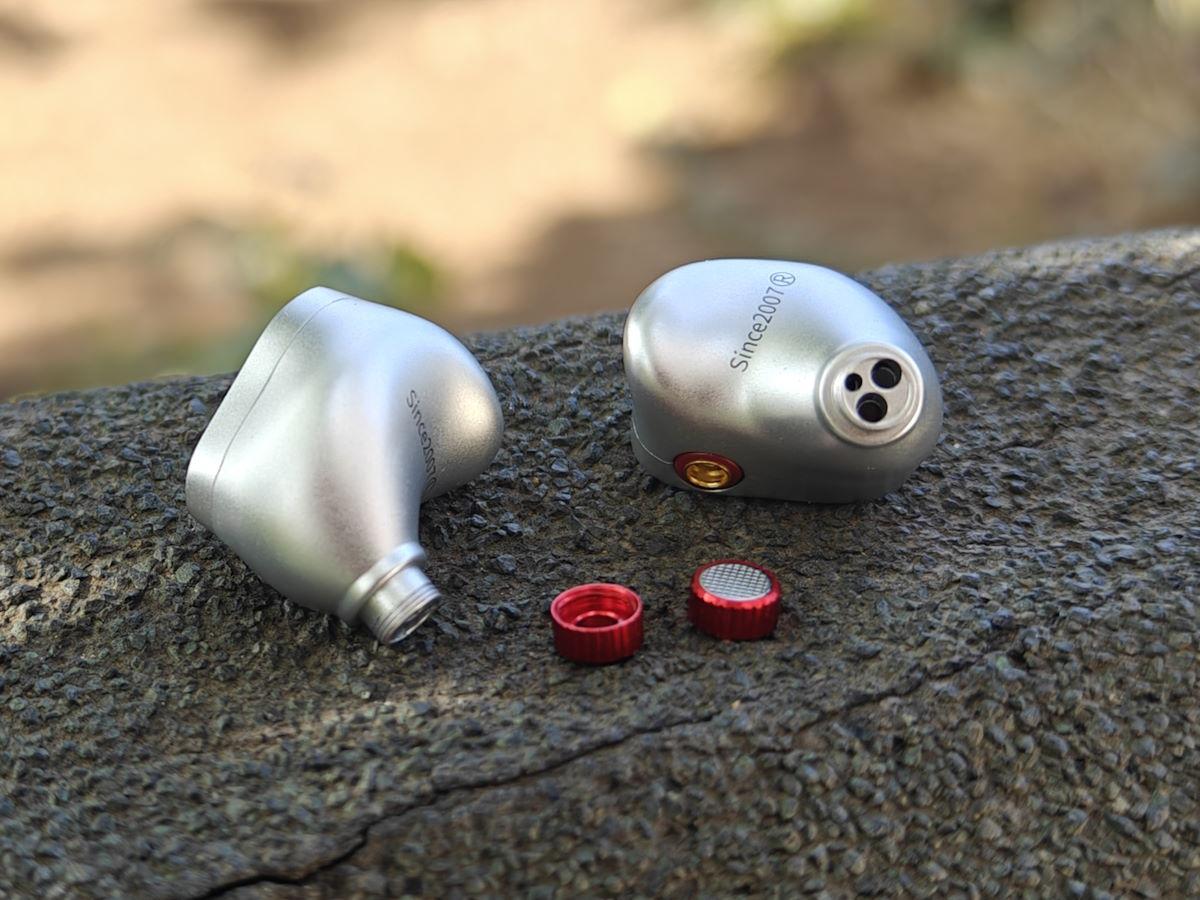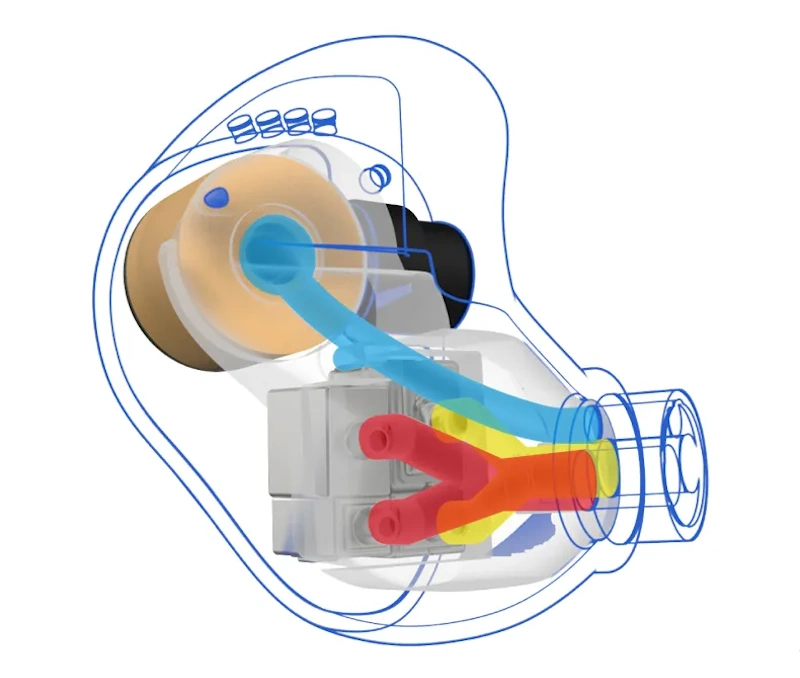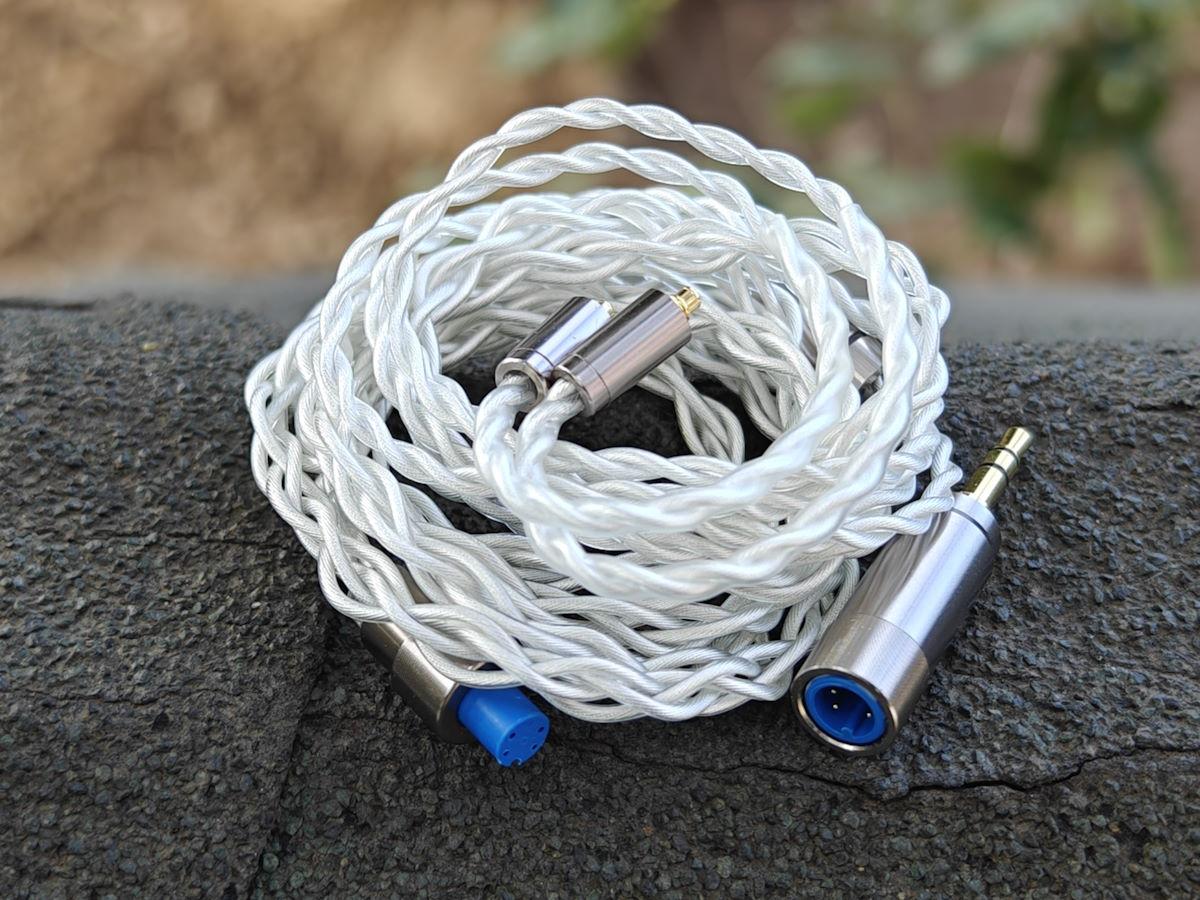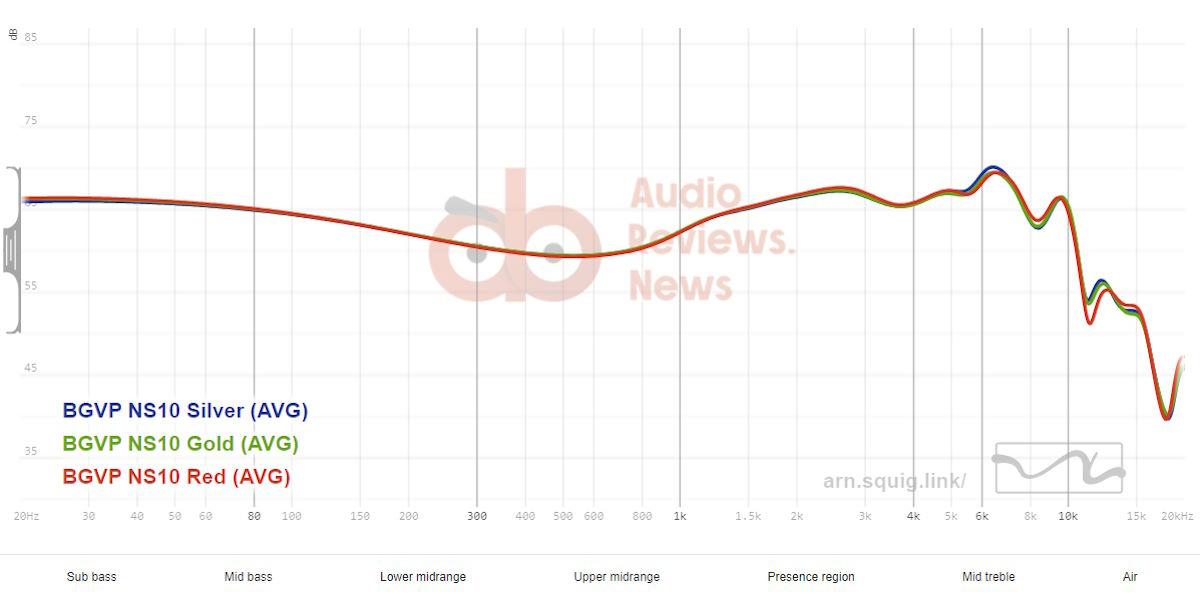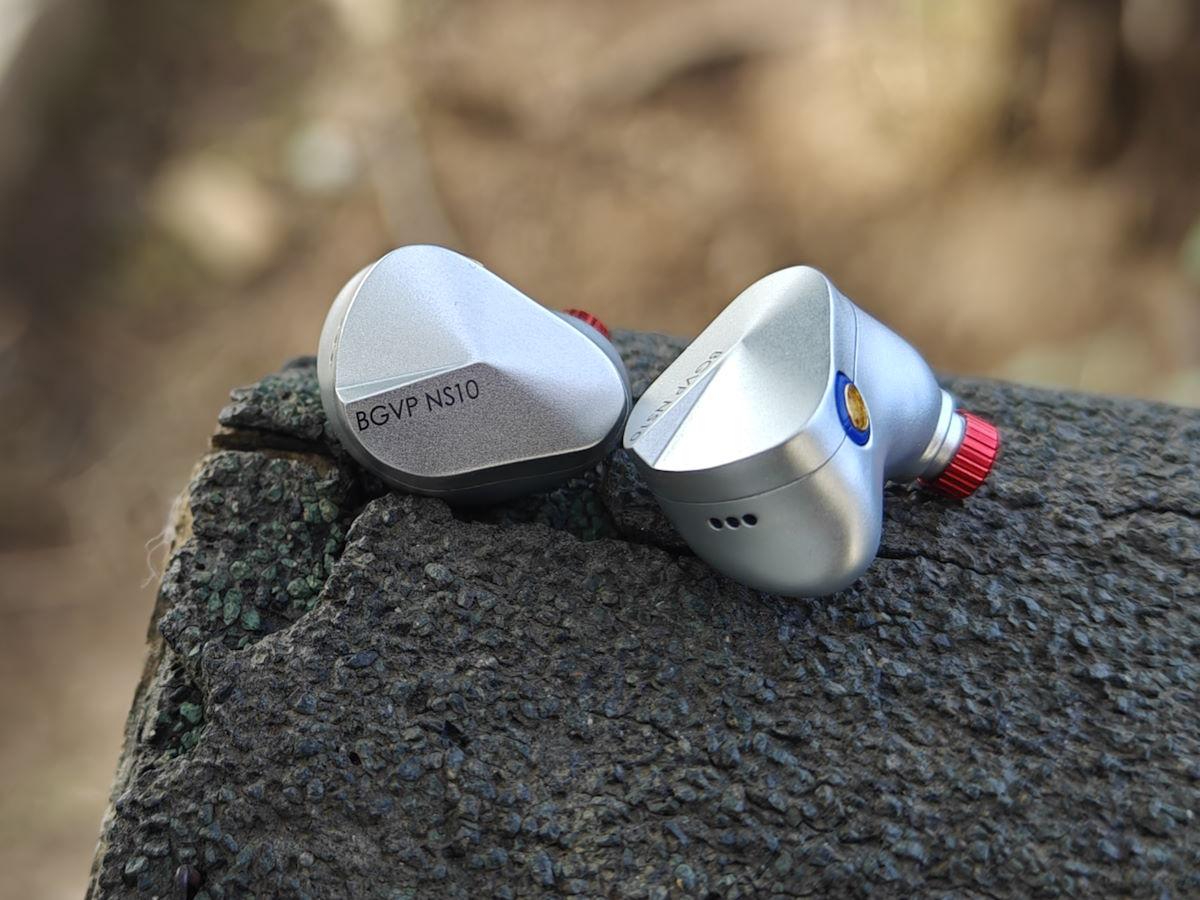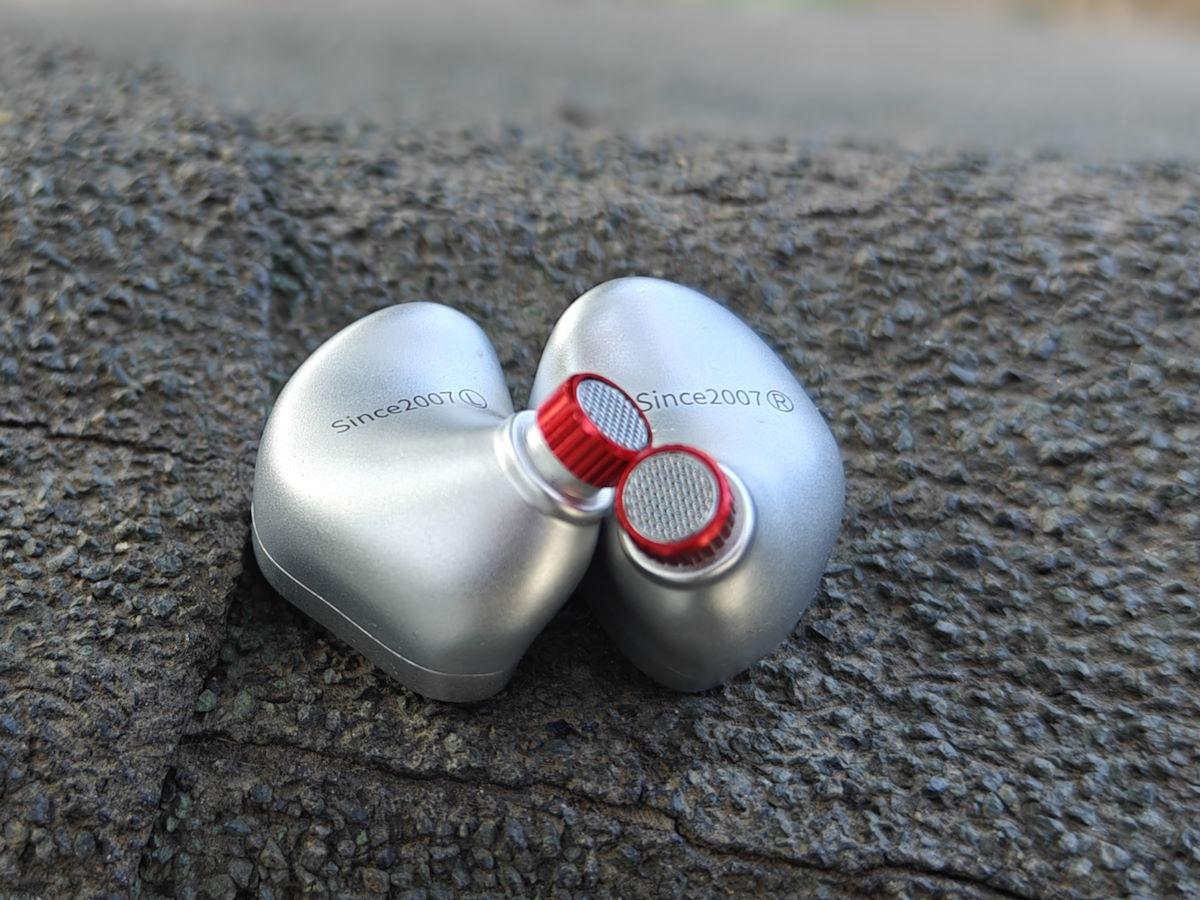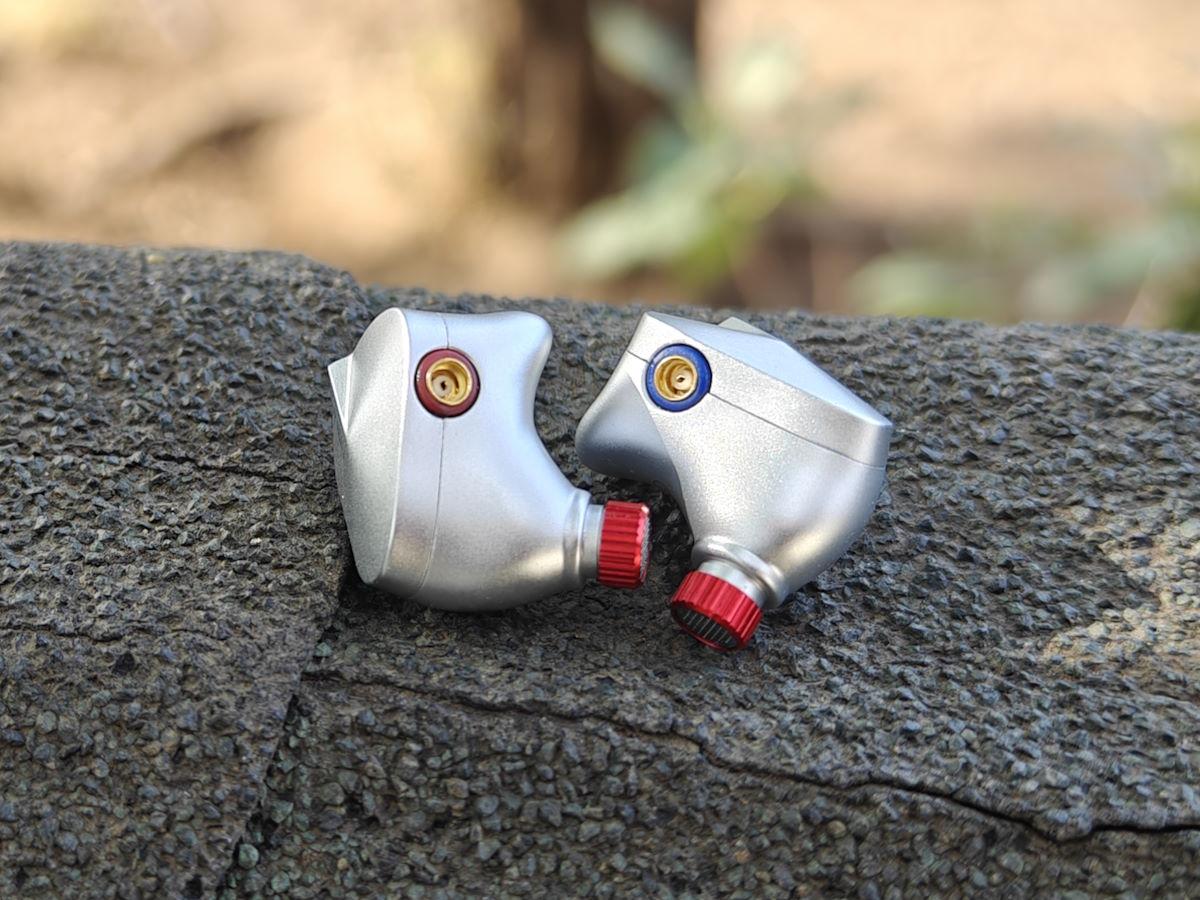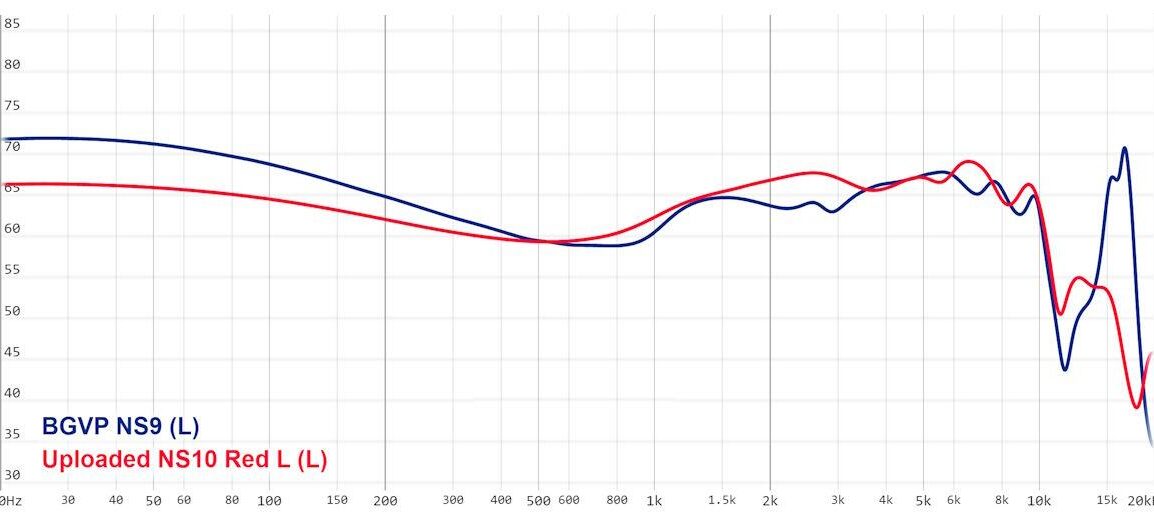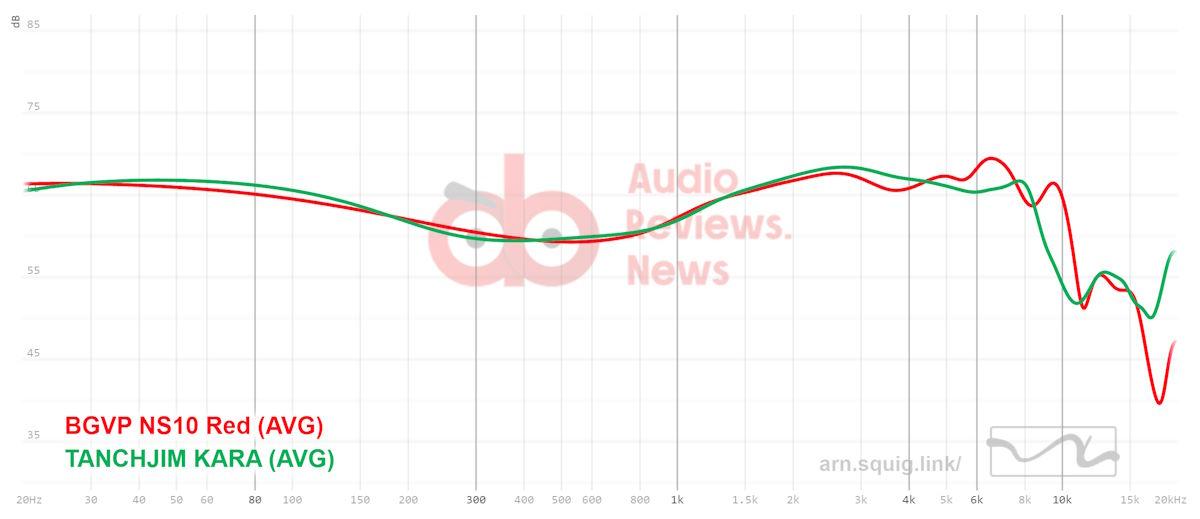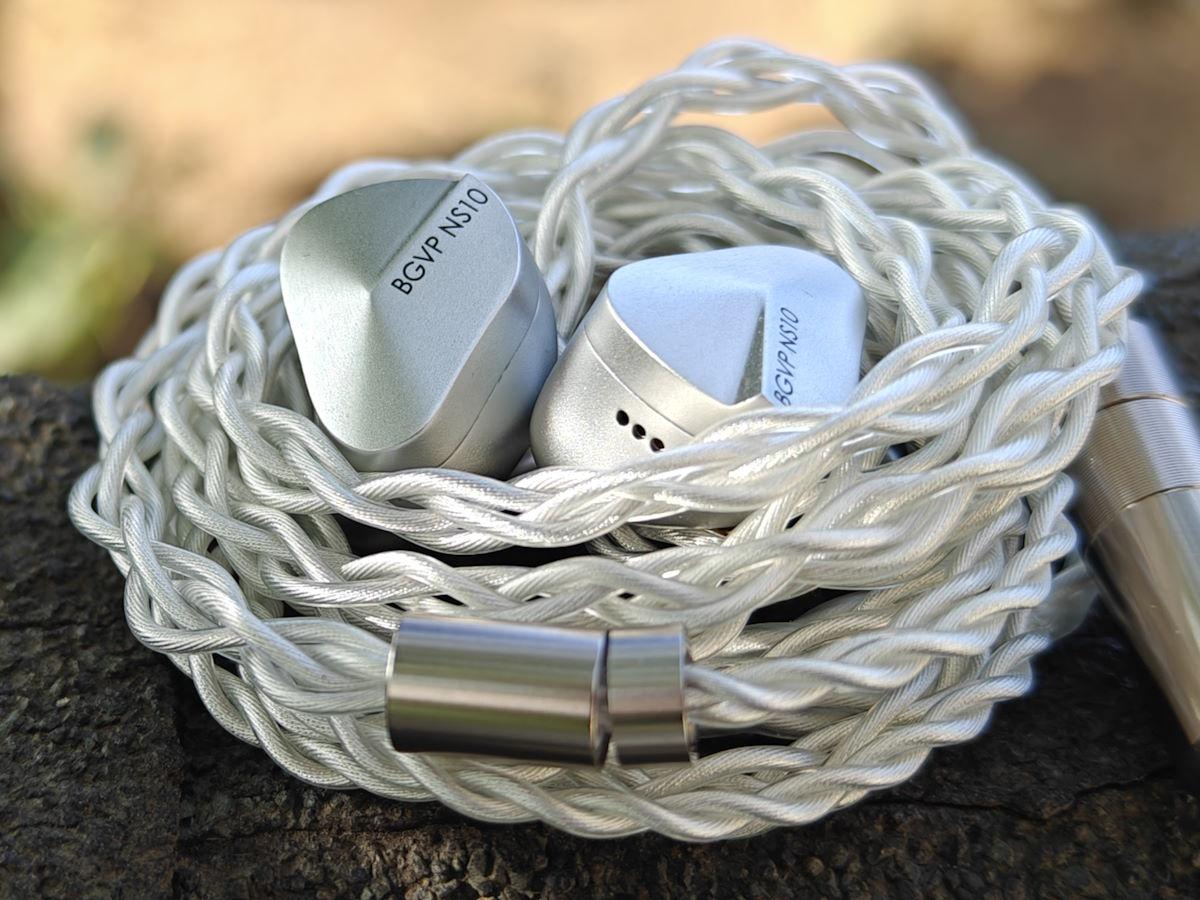BGVP NS10 Review – 2DD+8BA Ten Drivers Per Side
BGVP’s NS10 in-ear monitor comes with 10 driver configuration per side in the form of 2 dynamic drivers and 8 balanced armature drivers. Let’s analyze how those drivers are configured.
Bass: The coaxial dual dynamic driver uses a new dynamic coil, new DC material, and graphene diaphragm specifically developed for NS10, enabling deep and powerful bass for an immersive experience.
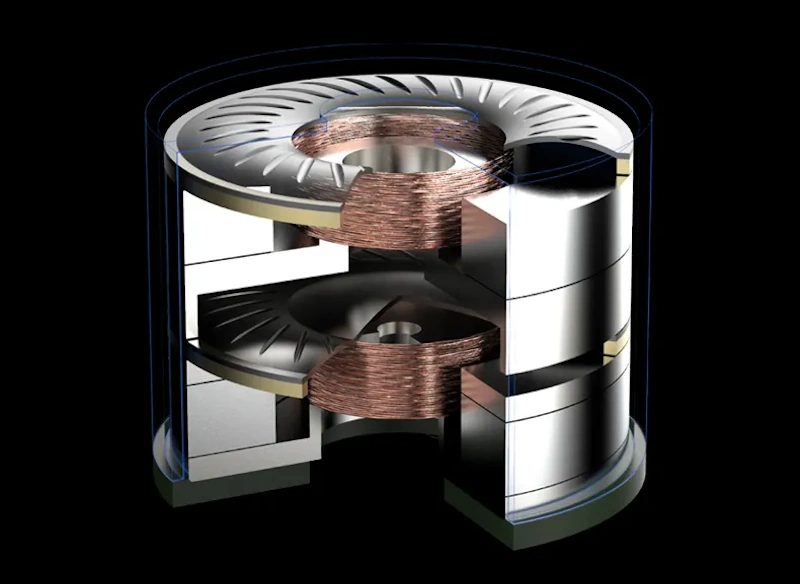
Midrange: Equipped with Sonion2300 series balanced armature drivers and custom FDK-60718 for the midrange audio, providing better, smoother, and more beautiful vocal transitions.
Treble: Utilizes the classic Knowles RAF series balanced armature drivers with tuning holes, which can significantly improve vocal density and make the mid-high frequency transition more natural.
Ultra-high Frequencies: Uses BGVP’s proprietary dual-compound driver, NFK-70817, which combines years of acoustic experience, developed and improved from 31736 and 30095, with high-frequency extension up to 40kHz, significantly enhancing high-frequency extension up to 40kHz, significantly enhancing high-frequency extension and making the sound more transparent and natural.
NS10 uses brass filters to effectively suppress harmonic vibrations, offering three different styles of musical expression. You can change the filter that provides the sound you prefer.
- Silver (original, general setting) – Suitable for pop, ACG, and other popular music.
- Red – Balanced tri-band, suitable for omnivorous music lovers.
- Gold – HiFi tone, uncolored, suitable for classical music.
NS10 uses a single piece of 7-series aviation-grade aluminum processed by imported five-axis CNC lathes. Each cavity is crafted with intricate techniques, from polishing, sandblasting, electroplating, and oxidizing to engraving, providing a more luxurious experience akin to a piece of art.
NS10 employs a brand-new 3D printed bracket structure, combined with BGVP’s rich tuning experience and sound acoustic principles, enabling compact placement of ten units, independent three-way sound tube output, and custom acoustic damping for NS10. Harmonics and distortion are reduced, making the earphones more stable overall and ensuring full high-fidelity audio quality.
NS10 contains a refined frequency circuit built with eight high-precision Samsung capacitors and resistors to create a sophisticated four-way frequency system. This ensures a balanced tri-band tuning philosophy, pleasing and not piercing, high-density vocals, and better three-band frequency analysis for a more layered sound experience.
NS10 comes standard with high-purity 6N OCC silver-plated upgrade wire, which can effectively reduce distortion and transmission loss in the signal, reproducing more authentic sound. The second-generation MMCX expandable detachable design greatly increases the service life and comes with an interchangeable 3-in-1 plug.
What’s in the box
Features
- Ten drivers (2 dynamic + 8 balanced armatures)
- Aviation aluminum metal cavity
- Electronic four-way frequency system
- Replaceable tuning nozzles
- Brand-new 3D printed bracket structure
- 3.5/2.5/4.4 triad cable
- Standard MMCX socket
Specs
- Impedance: 12ohm
- Frequency Response: 20Hz-40kHz
- Sensitivity: 110dB SPL/MW
- Distortion: <1.5% (1kHz)
- Channel Difference: <1dB
- Cavity Material: Lightweight aluminum alloy
- Earphone Unit: 8 balanced armatures + coaxial composite dual dynamic
- Wire: Four-strand 6N OCC silver-plated triad wire (4.4/2.5/3.5)
- Wire Length: 125cm ±5mm
- Price: $169
I want to thank BGVP for providing me with the review sample of NS10.
Sound
The NS10 comes with a tuning that fairly offers a neutral sound with subtle boosts to the bass and treble. Its exceptional resolution sets it apart, with each instrument and vocal occupying its own space.
NS10 is an efficient earphone and doesn’t require any extra amplification. However, it does reward you when you give it a high-quality source. I used SMSL’s new AK4499EX-powered DO300EX DAC/AMP as a source connected to my PC.
Lows
The bass of the BGVP NS10 hits deep with good presence and weight. The bass drum hits aren’t exaggerated like in more V-shaped IEMs such as the Sono with the red nozzle. However, its bass emphasis gives it a very satisfying, thick, and warm tonality.
I never found the bass quantity lacking. The amount of rumble and impact should be enough for most non-bass heads. Bass hits are textured and well-articulated. Different bass hits do not come off as a bloated mess and are played back with good control.
The warmth introduced into the overall tonality gives bass guitars and deep horn instruments a larger-than-life sense of authority that gives jazz tracks a “wow” factor. This warm tonality on the lower end bleeds into the lower mids at times but is still well-controlled for the most part.
In terms of bass quality, the texture is excellent and the body is full, providing a satisfying and engaging experience. The bass attacks are clean and well-defined. the bass is balanced and doesn’t overpower the other frequencies.
Mids
The BGVP NS10 mids are decently articulated with decent resolution. The lower mids have a very bodied presentation in no small part to the warmer tonality on the low end. This gives male vocals good rumble and authority, whilst being able to playback vocal techniques with good texture and resolution.
Piano keys and acoustic guitars are less forward than the rest of the mids, however, they still maintain a good sense of resolution. They are never drowned out; they are merely less audible when compared to the rest of the sounds in the frequency response.
The upper mids are presented with good air and resolution. Percussive wind instruments were played back with good articulation, and female vocals were presented with very good energy and contributed to a very exciting sound signature.
Male vocals sound rich and warm but are still clear and articulate. Female vocals sound natural and vibrant but never shouty or sibilant. The midrange overall is very detailed, textured, and immersive. Each instrument and vocal is distinct and well-defined, with no muddiness or congestion even in complex tracks. The NS10’s midrange strikes a balance between neutrality and warmth that makes it both expressive and easygoing.
Highs
The treble region of the BGVP NS10 is very airy and energetic. Cymbals and percussive wind instruments are presented with good energy; however, I did observe sibilance in some cases though it did not reach the point of being a deal breaker.
Individual cymbal strikes were played back with good detail, making different cymbal strikes and types easily distinguishable from each other. This overall energy added by this treble tonality contributes to an engaging and impressive listening experience.
The NS10’s treble imparts an airy and spacious character to the music, lending it an open and precise quality. NS10’s treble is a standout feature, delivering ample detail and clarity.
Technicalities
The NS10’s instrument separation and imaging are top-notch, producing a perfectly defined soundstage where each element’s position and distance are clearly perceptible to the listener.
Its forward stage positioning thrusts the listener into the heart of the music, creating an immersive experience. While the width and depth of the soundstage are impressive, it’s the height of the image that truly dazzles, adding extra dimensionality to the listening experience.
vs BGVP NS9 (2DD+7BA)
Although NS10 is the follow-up model of the 2021 released NS9, they are completely different when it comes to sound, as you can see in the graph. The NS9 was too bassy for my taste and the overly recessed upper mids and lower mids made the NS9 a dark sounding IEM. The NS10 on the other hand has the right touches in the tuning and sounds on the balanced side.
The gentle elevation on the lows combined with the almost right amount of elevation (wish it was a few dBs higher) on the upper mids including the pinna gain gives the NS10 to become a mature IEM in the sound. The treble section of the NS10 also has more extension which gives it more clarity and air, making it much more pleasing to listen to. NS10 also has much better staging capabilities compared to the NS9.
vs Tanchjim Kara ($179, 1DD+4BA)
The Tanchjim Kara comes with a 1DD+4BA driver configuration and is in the same price range as the NS10. Kara has more mid-bass extension and this makes it more on the bassy side compared to the NS10. It has more quantity on the bass notes. But I like the lows on NS10 more, more gently, comes on the front when the track calls it, and never gets in the way of the mids and treble. Both IEMs are fairly balanced and natural-sounding besides the lows.
The NS10 has more extension on the mid and upper treble section. Again this gives the NS10 more clarity and air and extends the soundstage because of its balanced sound across the frequency range. Depending on your taste both IEMs are very good but my taste is on the NS10 side.
Sum-Up
The BGVP NS10 is an engaging, well-tuned pair of IEMs that make use of a unique 10-driver configuration. Its smooth and balanced tuning is satisfying and should be non-offensive for most listeners who prefer a natural-sounding headset.
At the price point, this is a unique IEM that provides an exciting mix of ten drivers whilst at the same time maintaining pleasing tonal quality and average-to-above-average technicalities. And definitely a big success over its predecessor.

